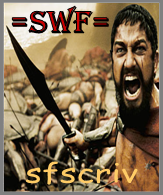Post by sfscriv on Mar 2, 2013 8:44:19 GMT 1
VBS2 was officially launched on 17 April 2007. It was developed in close cooperation with the USMC, Australian Defence Force and other military customers.
VBS2 supports large multiplayer network sessions allowing join-in-progress and improved administrator functionality. VBS2 provides improved simulation of complex urban areas, including destructible buildings, round penetration through walls and operable and destructible doors. Weapon platforms are capable of thermal imaging, simulation of fire control systems and turret override. Multiple vehicle turrets are possible. Weapon ballistics have been improved.
VBS2 offers realistic battlefield simulations and the ability to operate land, sea, and air vehicles. Instructors may create new scenarios and then engage the simulation from multiple viewpoints. The squad-management system enables participants to issue orders to squad members.
VBS2 was designed for federal, state, and local government agencies and can be specifically tailored to meet the individual needs of military, law enforcement, homeland defense, loadmaster, and first responder training environments.
VBS2 may be used to teach doctrine, tactics, techniques, and procedures during squad and platoon offensive, defensive, and patrolling operations. VBS2 delivers a synthetic environment for the practical exercise of the leadership and organizational behavior skills required to successfully execute unit missions.
VBS2 is suitable for training small teams in urban tactics, entire combat teams in combined arms operations or even non-military usage such as emergency response procedures in lethal and non-lethal environments or terrain visualization.
The After-Action-Review module allows detailed review of a completed training mission, with every player, AI, vehicle movement being recorded, as well as any bullet path and any destruction to objects or terrain.
The VBS2 terrain editing tool, Visitor 3, will support direct import of terrain and shape data to recreate any area of operation in the simulation. VBS2 also includes real-time command and control functionality for large numbers of AI or human participants.
The simulation engine driving VBS2 is Real Virtuality 2, developed by Bohemia Interactive. VBS2 allows a user to develop large terrain areas, over 10,000 square kilometres (3,900 sq mi) in size (at any terrain resolution) and populate the terrain area with millions of objects in accordance with VMAP shape data, and then texture-map the entire representation with high-resolution satellite imagery or aerial photography.
Once the terrain representation is exported into VBS2, the simulation engine will provide a simulation of the real world, incorporating moving trees and grass, ground clutter, ambient animal life, shadows, dynamic lighting, weather and time of day.
A new streaming capability provides an efficient means of loading complex terrain areas as object and texture data is processed only when required. View distances are now typically five times greater than in VBS1 (depending on processor speed) – level of detail culling has been improved to allow attack helicopters and armoured vehicles to engage at realistic ranges, and forward observers to call artillery fire from greater distances.

List of Customers
Australian Defence Force
New Zealand Defence Force
Royal Netherlands Army
Finnish Defence Forces
United Kingdom Ministry of Defence
Canadian Forces
Singapore Armed Forces
United States Marine Corps
United States Army
United States Army Special Forces School
United States Military Academy (West Point)
United States Secret Service
Per Copy License - $2,320.00
VBS2 - products.bisimulations.com/


